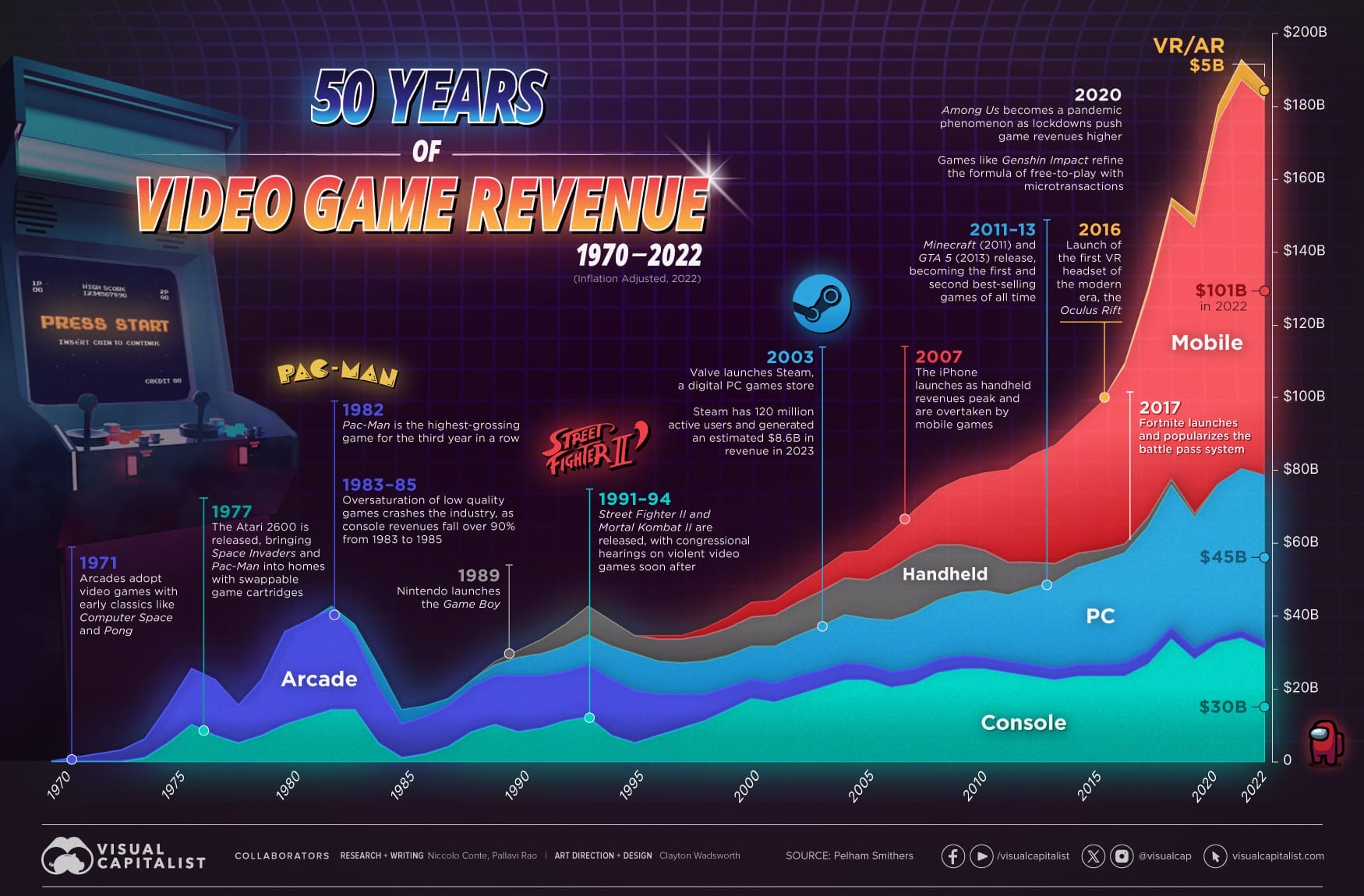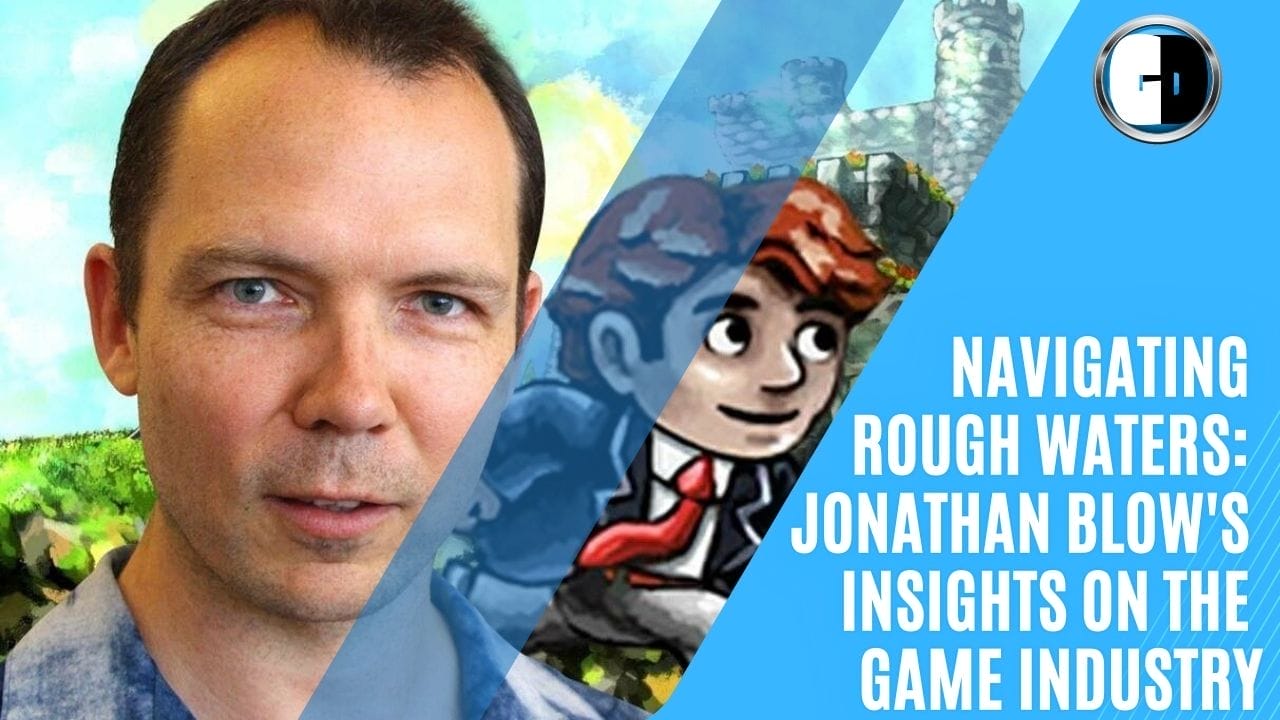While navigating through twitter, I found a very interesting thread from Famous Jonathan Blow’s Insights on the Game Industry ( Braid and other indie games) reflecting on the current state of the game industry, focusing on the challenges faced by developers, particularly indie creators. It explored the complex landscape where financial constraints, rapid technological advancements, and market demands intersect, creating a unique set of hurdles for game developers to overcome. It also offered some insights into how these challenges impact creativity, innovation, and the overall health of the industry.

I thought that it would be a great value for all indie game developers and transform it into the following article.
Article Key Takeaways:
- Financial Constraints: About 65% of indie developers struggle to secure funding, often relying on crowdfunding platforms which come with their own set of expectations and pressures.
- Technological Pressure: The rapid evolution of gaming technology creates a high-stakes environment, forcing developers to constantly adapt to new software, hardware, and design trends.
- Creative vs. Commercial Balance: Developers face the challenge of balancing their unique creative visions with market demands and commercial viability.
- Adaptive Strategies: Successful indie developers often employ community engagement, transparent communication, and iterative development approaches to stay relevant and competitive.
- Innovation Opportunities: Despite the challenges, constraints can lead to creative breakthroughs and innovative solutions, particularly in emerging platforms like virtual and augmented reality.
- Industry Resilience: While facing significant challenges, the game industry remains a space for potential creativity and innovation, requiring developers to be resilient, creative, and adaptable.
Understanding the Current Challenges in the Game Industry
As someone who has been following the game industry for many years, I can say that we are at a pivotal juncture. The challenges faced by developers, particularly indie creators, are becoming increasingly pronounced. It’s a complex landscape where financial constraints, rapid technological advancements, and market demands collide, and each aspect presents its own set of hurdles.

Financial Constraints Affecting Indie Developers
One of the most prominent issues in the industry is the financial strain that indie developers experience. According to recent data, around 65% of indie developers report difficulties in securing funding for their projects. This figure points not only to the scarcity of resources available to these creators but also to the competitiveness of the market.
Many indie developers operate on shoestring budgets or rely on crowdfunding, which can be a double-edged sword. While platforms like Kickstarter and Indiegogo have empowered developers to raise funds directly from consumers, they also come with expectations. Developers must meet high standards and deliver quality products to satisfy backers. This pressure can lead to stress and, strangely enough, often hampers creativity.
The Pressure of Rapid Evolution in Technology
Another daunting challenge is the swift evolution of technology within the gaming industry. We witness constant innovation almost every 6 to 12 months, which means developers are perpetually racing against the clock. Keeping up with new software, hardware, and design trends creates a high-stakes environment that can easily lead to burnout.
“The game industry is experiencing a rough patch, but it is also a time for innovation and resilience.” — Jonathan Blow
Jonathan Blow, a prominent figure in the world of independent games, encapsulated this sentiment succinctly. Many developers must adapt to evolving standards while still creating compelling narratives and engaging gameplay experiences. It’s this balancing act that’s often the most taxing. Imagine pouring your heart and soul into a game only to find that the platform it was designed for has been rendered obsolete. That’s the reality for many in the industry.

Balancing Creative Visions with Market Demands
Perhaps the most insidious challenge is the delicate balance between nurturing creative visions and addressing market demands. As independent creators, we often have unique ideas and stories we want to tell, but the question invariably arises: Will this resonate with our audience? This balancing act can sometimes feel like walking a tightrope.
When developers prioritize commercial viability, they may sacrifice the very creativity that distinguishes their projects. The temptation to adhere strictly to market trends can dilute originality. On the flip side, sticking rigidly to a creative vision without considering the audience can lead to financial ruin. This internal conflict can stymie innovation and expose creators to grave financial risks.
The Clashing Priorities
The interplay of these challenges creates a multifaceted problem: how can one innovate within an increasingly commercialized space? In my observations, successful indie developers often find ways to market their games effectively while still embracing their unique artistic vision. They employ strategies like community engagement, transparent communications with backers, and iterative development approaches to stay relevant.
- Community Engagement: Many indie developers foster close relationships with their communities, seeking feedback and using it to guide their development process.
- Transparent Communication: Being open about the challenges they face can help build trust and understanding with their audience.
- Iterative Development: By releasing early versions of a game and allowing players to experience and influence the development, developers can create a product that is more likely to resonate with its audience.
This type of adaptiveness may very well be the key to thriving in today’s gaming industry. It acknowledges the challenges yet insists on pushing boundaries creatively. However, it comes with its own pressures, as developers must constantly reiterate and refine their ideas based on market feedback, which can sometimes feel like chasing a mirage.
The Role of Innovation amidst Challenges
A silver lining exists, though. For all the difficulties, the prevailing notion in the industry is one of innovation. The very constraints imposed by finances and technology can lead to surprising creative breakthroughs. Innovating on a budget often results in inventive solutions to problems that larger developers might overlook.
Moreover, the rapid evolution of technology has opened doors to new platforms, like virtual reality and augmented reality, offering developers new avenues to explore. These emerging platforms pave a path for artistic expression that could redefine our understanding of gaming as a medium.
Final Thoughts
As I reflect on my own journey in the game industry, it becomes clear, that I have to agree with Jonathan, that while we are navigating these complex challenges, there also lies immense potential for creativity and innovation. Understanding and confronting these issues head-on will be vital as we collectively strive to create more engaging and relatable gaming experiences.
The game industry stands at a critical juncture, facing a complex array of challenges that test the resilience and creativity of developers, especially those in the indie space. The interplay of financial constraints, rapid technological advancements, and the delicate balance between creative vision and market demands creates a landscape that is both daunting and ripe with opportunity.
While these challenges pose significant hurdles, they also serve as catalysts for innovation. The financial pressures have led to the rise of alternative funding models like crowdfunding, which, despite its challenges, has democratized game development to an extent. The rapid technological evolution, though demanding, opens new frontiers in gaming experiences, particularly in emerging fields like virtual and augmented reality.
The struggle to balance artistic integrity with commercial viability remains a central theme, but it has also given birth to more transparent and collaborative development processes. Successful developers are increasingly engaging with their communities, embracing iterative development, and finding innovative ways to market their unique visions.
Looking ahead, the industry’s future lies in its ability to adapt and innovate within these constraints. The resilience shown by developers, particularly in the indie space, suggests a promising path forward. As Jonathan Blow aptly put it, this “rough patch” in the industry is simultaneously a time for innovation and resilience.
The coming years will likely see a continued emphasis on community-driven development, more experimentation with emerging technologies, and potentially new business models that better support creative risk-taking. While the challenges are significant, they also present opportunities for those who can navigate them skillfully.
Ultimately, the game industry’s ability to overcome these hurdles will not only shape the future of gaming but also potentially redefine our understanding of interactive entertainment. As developers continue to push boundaries and find new ways to create engaging experiences, the industry may well be on the cusp of a new era of creativity and innovation.
The need for resilience, creativity, and adaptability has never been greater, and it will be fascinating to see how developers rise to meet these challenges.
The original thread from Jonathan Blow on twitter can be found here.
A game developer that wants to share its knowledge and experience with other game developers-





